
Intense Innovation
The TASIAs are back, celebrating the creativity needed to transform colorful concepts into vibrant analytical tools! With a record number of entries, the final 15 reflect the full spectrum of analytical advances, from ingenious software for managing impurity data, to transformative MS imaging technology.
15. CHARON Particle Inlet for PTR-TOFMS
A single instrument for direct monitoring of gas-phase and particulate organics.
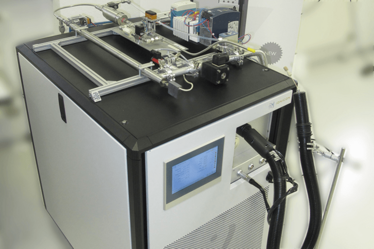
A new inlet enables IONICON PTR-TOFMS series instruments to measure sub-µm particles directly with a versatile, reliable and proven technology for VOC analysis: PTR-MS. One single instrument from IONICON covers VOCs and now additionally allows the molecular-level characterization of sub-µm particulate organic matter at a 1-min time-resolution.
The CHARON particle inlet consists of a honeycomb activated charcoal denuder that efficiently adsorbs organic gases and transmits particles, a high-pressure aerodynamic lens system that collimates and extracts sub-µm particles, and a thermo-desorber that evaporates non-refractory organic particulate matter.
These organics are subsequently analyzed as gas-phase analytes with a high-resolution IONICON PTR-TOFMS instrument. By coupling the CHARON inlet to a PTR-TOFMS, the VOC inlet remains fully operational. An automated valve system allows for scheduled switching between gas- and particle-phase measurements, as well as zeroing of the particle inlet.
Potential impact
CHARON, in combination with the IONICON PTR-MS technology, detects an abundant range of atmospheric organic carbon. Customers can upgrade their real-time analytical instrument to monitor gas-phase organics and particulate intermediate, semi-and low-volatile organic compounds (IVOCs, SVOCs and LVOCs, respectively) in < ng/m³ concentrations, with a single CHARON-PTR-TOFMS analyzer.
CHARON is a direct inlet system that doesn’t sacrifice one of the main benefits of PTR-MS instruments: real-time monitoring capabilities. With its high temporal resolution and the high degree of conserved chemical composition information, CHARON PTR-TOFMS is able to identify and quantitatively follow atmospheric particulate tracer compounds such as levoglucosan and polycyclic aromatic hydrocarbons. One-minute resolved data of hundreds of identified chemical compositions boost the quality of source apportionment significantly.
14. The Topaz System
A simplified, fully integrated LC-MS system for clinical diagnostics.
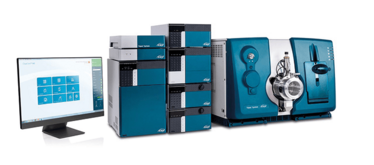
LC-MS/MS is important for efficient and reliable diagnostic testing, but is not used to its full potential because of its perceived complexity. The result has been an undesirable compromise of costly send-out testing, extended turnaround times, and limiting assay performance. The CE-marked Topaz System, built on SCIEX’s most robust technologies to date, incorporates features that enhance usability to help new users build proficiency quickly. The heart of the system lies within the ClearCore MD software, an intuitive platform that simplifies and streamlines workflows and method development, bringing the power of LC-MS technology to the hands of the routine user.
Potential impact
The Topaz System provides accessible LC-MS technology with much-needed gold-standard accuracy to clinical diagnostic labs. Currently, immunoassays are the prevalent technology for routine testing. These tests generally offer a high degree of automation and fast results, but have a number of drawbacks, including issues with accuracy, selectivity and specificity. These drawbacks can have profound diagnostic implications, often requiring use of LC-MS for definitive accuracy. The simple design of the Topaz System lowers the barriers to this powerful technology for the standard clinical lab. Clinical labs will be able to offer improved quality of care for patients without the need for high-level specialists to run the mass spectrometer. In addition, the Topaz System’s flexibility enables clinical labs to rapidly expand their testing services and bring previously outsourced tests in-house, saving time and costs.
What the judges say:
“This could be another important step in allowing MS to be used in the clinic.”
13. ePrep Sample Preparation Workstation
Simple, low-cost automated sample preparation for every laboratory.
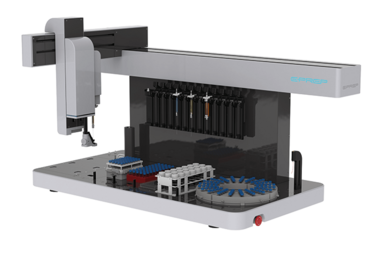
The ePrep Sample Preparation Workstation specifically addresses the need for a simple, flexible, low-cost and reliable automated sample preparation system for analytical laboratories. It targets chromatography laboratories that handle many different sample preparation protocols with varying, often small, batch sizes that are typically analyzed on different instruments.
The design of ePrep makes it easy to program and operate, with most sample preparation workflows created and validated ready for operation in 5–15 minutes. The key to its operation is the predefinition of tasks, syringes, tools, accessories, racks and vials – enabling workflows to be created using “drag-and-drop” processes.
The ePrep solution is more than an automated robotic platform – it also includes a range of novel accessories and consumables such as microSPE, disposable syringes, micro filtering and customizable chemistry that bring enhanced performance to common sample preparation processes.
Potential impact
Sample preparation techniques constitute a high portion of analytical cost, have not kept up with the efficiency of modern analytical equipment, and are the major source of analysis costs and errors. Despite this, most analytical chemistry laboratories are reluctant to automate because of high costs and complexity of sample preparation automation. ePrep has set out to change that paradigm with simple, low-cost and high-flexibility operation for the chromatography laboratory. It can effectively handle 5 to 500 samples and provides laboratories with improved precision, accuracy and operator safety.
What the judges say:
“A new approach to automated sample preparation. Highly flexible and applicable to every laboratory.”
12. G908 3-in-1 Cannabis Analyzer
Leverages GC-HPMS to perform three state-required cannabis tests on one device.
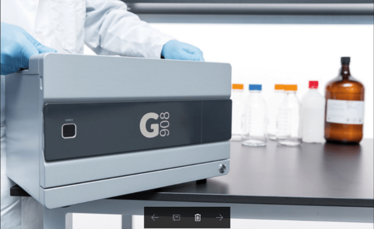
The G908 3-in-1 Cannabis Analyzer combines 908 Devices’ patented high-pressure mass spectrometry (HPMS) technology with the separating power of ballistic gas chromatography (GC) to perform three state-required cannabis tests – total potency, terpenes and residual solvents – on one device. Designed for central labs, growers and producers, the device makes it easy for users at all skill levels to accelerate analysis processes for a wide range of cannabis compounds, while reducing analysis time by more than 80 percent.
Unlike legacy lab instruments, G908 is easy to use, offering professional-grade cannabis analysis at the push of a button. Designed for durability and transportability, G908 can rapidly perform testing in the laboratory and at remote field-based settings. Moreover, the device costs less than legacy lab instruments and was designed with field serviceable components, which eases the financial burden placed on growers, producers and labs looking to purchase new instruments.
Potential impact
With state regulations demanding that products pass safety, purity and quality tests before distribution, those involved in the growing, manufacturing and testing of cannabis need a fast, rigorous analysis solution to ensure compliance.
In the lab, G908’s small footprint and compound selectivity eliminates the need for multiple, complex analytical instruments. GC-HPMS provides fast compositional analysis, enabling technicians to scale-up operations and successfully manage the hundreds of samples they need to test each day. G908 can perform analysis on residual solvents five times faster than legacy lab instruments.
For growers and producers, G908 will increase their chances of passing state-sanctioned testing. The ability to test products on-site throughout the cultivation, extraction and manufacturing processes provides growers and producers with the ability to determine optimum harvest conditions, and identify potential product quality problems early enough to take corrective action – reducing the risk of having batches quarantined or destroyed.
11. Q Exactive HF-X Hybrid Quadrupole Orbitrap Mass Spectrometer
An Orbitrap mass spectrometer that accelerates insights, from discovery to verification.
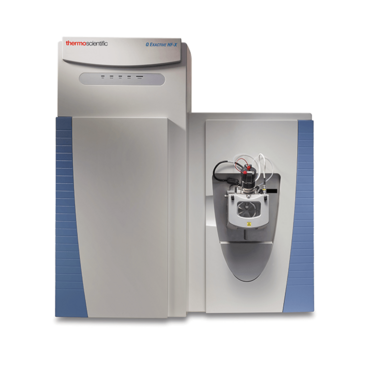
The Q Exactive HF-X Hybrid Quadrupole Mass Spectrometer provides sensitive and reproducible analyses of highly complex samples, setting new standards for depth of analysis, quantitative accuracy and reproducibility. The instrument delivers this through fast and accurate mass analysis, two-to-three-fold sensitivity improvements and up to eight-times better signal-to-noise ratio than previous models.
Potential impact
The Q Exactive HF-X Hybrid Quadrupole Mass Spectrometer enables scientists to comprehensively profile and quantify the proteome, discover and verify novel biomarkers, and fully characterize complex biotherapeutics. It allowed Jesper Olsen, Associate Professor and Deputy Director of the Novo Nordisk Foundation and Center for Protein Research at the University of Copenhagen, Denmark – an early tester of the Q Exactive HF-X for protein research – to identify 1,100 unique peptides per minute, setting a new world record. It can provide scientists with the depth of analysis, data quality and analytical precision required, without sacrificing robustness or speed.
What the judges say:
“A better Orbitrap! With each generation the Orbitrap gets better and better. This is no exception, pushing the limits of sensitivity and resolution.”
10. Luminata
Software for efficient and comprehensive management of impurity data in process development.
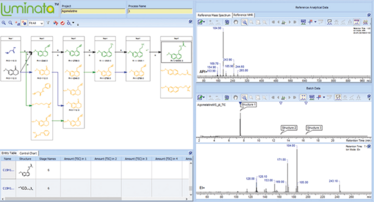
Luminata is an informatics system that enables organizations to establish effective impurity control strategies based on assembled analytical and chemical information – in a single environment.
Built on the multi-technique, vendor-agnostic ACD/Spectrus Platform, Luminata offers comprehensive data standardization – accomplished by aggregating chemical reaction information, and the associated formation and fate of impurities, with chromatographic and spectral data. Luminata facilitates efficient organization of the typically overwhelming quantity of analytical knowledge for processes and associated impurities at every stage.
Luminata’s assembly of searchable knowledge provides visualization, decision-support, and reporting capabilities; and facilitates collaboration between process chemistry and analytical research and development groups.
Potential impact
The current processes for managing impurity profile information are cumbersome and overwhelming. The sheer quantity of data generated is almost impossible to effectively organize and manage with currently available systems. Many organizations use Excel in an effort to transcribe scattered information from different sources into a single environment, but this is tedious, error-prone, and time consuming.
Luminata allows the multi-disciplinary teams that undertake process development projects to gather all the relevant chemical and analytical information in a single scientific environment. Furthermore, it supports a Quality-by-Design (QbD) approach to establishing effective process and analytical impurity control strategies. The fear of using old data is eliminated with access to live up-to-date information. This assembled data enables collaboration and information sharing in a manner not previously possible.
9. Ultivo LC/TQ - 1260 Infinity II Prime LC
A high-performance LC/TQ, a third of the size of previous generations.
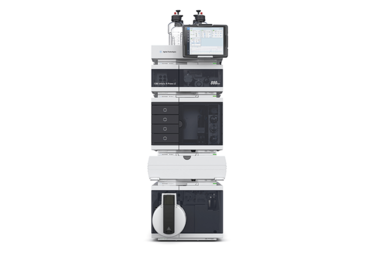
The Ultivo Triple Quadrupole LC/MS delivers the performance of a traditional high-end LC/TQ in a third of the laboratory bench space. It is also designed to be integrated into a stacked LC system to free up additional lab space.
Ultivo’s next-generation ion optics are miniaturized without loss of sensitivity. The novel twisted and tapered dodeca-hexapole cyclone ion guide collects ions and transmits them to MS1. Thin DC-only pre-filters provide efficient ion injection into the new reduced-size quadrupoles. The Vortex collision cell confines ions during fragmentation with a twisted and tapered hexapole, with fragmentation patterns comparable to those from traditional collision cells.
A new embedded software computing platform provides smart self-tuning and enhanced diagnostic capabilities. Removable instrument side panels provide easy access for system maintenance, and VacShield allows capillary exchange without breaking vacuum. The 1260 Infinity II Prime LC completes the system, offering the highest sample capacity per bench space for any laboratory.
Potential impact
Ultivo marks the next generation of LC/TQ instruments. It offers performance equivalent to or better than larger LC/TQ systems, with the added benefits of being smaller, easier to use and costing less to operate. Laboratories benefit from its space-saving and stackable design, providing optimal use of lab bench space, plus early maintenance feedback, enhanced serviceability, intuitive operational design, and robust/reliable performance in difficult matrices.
These enhancements along with streamlined data management tools ensure that Ultivo, when coupled with the 1260 Infinity II Prime LC, meets the challenges users face for performance, form factor, robustness, time-to-report, ease-of-use and ROI.
8. Captiva Enhanced Matrix Removal-Lipid
Highly selective, efficient and easy lipid removal for complex samples.
Bond Elut Enhanced Matrix Removal-Lipid dSPE sorbent was developed in 2015 and is recognized as an innovative technology in the food industry – it selectively target lipids using a combined mechanism of size exclusion and hydrophobic interaction and integrates into common workflows such as QuEChERS.
Advances in sorbent chemistry now allow EMR-Lipid to function in a pass-through SPE format – Captiva EMR-Lipid. The new format can be integrated into popular protein precipitation workflows and provides bioanalytical scientists with a tool to remove lipids, including phospholipids, without adding additional steps. A non-drip feature in smaller formats facilitates in-cartridge protein crash, while larger sizes support gravity flow elution for food safety labs. The new Captiva EMR-Lipid formats deliver high recovery for a diverse range of analytes and readily accommodate multiclass, multiresidue analysis workflows for complex, fatty samples.
Potential impact
When organic solvent is used in protein precipitation of many plasma and whole blood samples, lipids remain soluble in the sample and cause matrix effects that negatively affect the data, reduce method sensitivity, and lead to poor reproducibility. Lipids can also accumulate over time within the system, affecting column and instrument long-term performance due to contamination and carryover issues within the detection system.
The Captiva EMR-Lipid pass-through SPE format simplifies workflows and reduces sample preparation steps. With cleaner samples (removing >99 percent of phospholipids), the method sensitivity and analyte recovery is improved, which results in faster data analysis, better reproducibility and higher data confidence. By avoiding the introduction of a heavy-laden matrix into the system, unscheduled downtime is reduced.
What the judges say:
“Simplifies sample preparation for complex samples, especially in food analysis.”
7. timsTOF Pro
A new standard for shotgun proteomics.
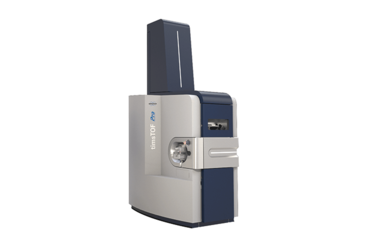
The front-end TIMS analyzer is optimized for higher-speed shotgun proteomics from smaller sample amounts with high performance single-shot peptide and protein identification. Its dual-TIMS geometry enables the PASEF (parallel accumulation serial fragmentation) method, where ions are accumulated in parallel in the first TIMS section, while ions are released from the second TIMS section for MS/MS fragmentation. PASEF results in a nearly 100 percent duty cycle, giving it excellent performance for reproducible nanoflow LC-MS analysis of enzymatically digested protein mixtures.
Potential impact
The PASEF capability delivers higher-sensitivity and higher-speed shotgun proteomics without loss of mass resolution. Higher scan speeds result in lower mass resolution in FT-based MS technology commonly used for shotgun proteomics. These critical limitations are eliminated by PASEF, allowing for a duty cycle near 100 percent and high sensitivity, while maintaining ultra-high mass resolution for both the precursor and the product ions. These benefits give scientists the tools to dig deeper into the complex biology of the cellular machinery and the potential to discover low-level, biologically significant proteins, or validate them in translational and clinical proteomics research on large cohort sizes and in longitudinal studies.
What the judges say:
“Adds an exciting extra separation dimension for complex sample analysis in proteomics.”
6. VASE
Vacuum-assisted, solvent-free GC sample preparation for analysis of volatile to semi-volatile compounds.
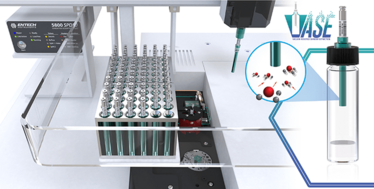
VASE (vacuum-assisted sorbent extraction) is a new solvent-free headspace extraction technique, which performs an in-vial extraction for gas, liquid, and solid samples, followed by direct thermal desorption into the GC. The amount of phase is approximately 150 times greater than SPME, with adsorbents increasing the surface area by thousands of times relative to the low surface area of a PDMS coating. The top of the adsorbent tube contains a seal that allows the vial to be evacuated through the adsorbent immediately after insertion. Under vacuum, the sample collects faster than at atmospheric pressure, enhancing the recovery of low-volatility compounds and often achieving exhaustive extractions. VASE allows analytes to diffuse onto and collect at the front of the adsorbent bed, achieving a better recovery of heavier compounds than dynamic headspace, while eliminating common carryover issues.
Potential impact
VASE has the potential to provide a more sensitive solution than purge and trap for volatiles in water and other matrices, while also replacing solvent extraction for analysis of pesticides, PAHs out to six rings, and other SVOCs in water.
VASE increases the number of applications compatible with headspace extraction by:
- enabling reproducible headspace extractions of low volatility compounds with minimal matrix effects
- combining the strengths of SPME and dynamic headspace to achieve excellent precision and sensitivity over a boiling point range as wide as -50⁰C to +500⁰C
- performing complete extraction to equilibrium, which has been shown to eliminate the need to perform isotope dilutions
- enabling exhaustive extraction of samples at 25⁰C, making VASE suitable for analysis of flavor compounds and contaminants in consumer products.
5. Portability
A portable mass spectrometer with TDESI direct ambient ionization source.
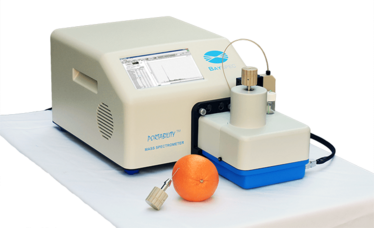
BaySpec Portability is specifically designed for field applications, with a lightweight and compact size. It is the only compact mass spectrometer using miniaturized linear ion trap technology to achieve ppb-level detection. The instrument is also equipped with two inlets for low pressure and atmospheric sampling. It is compatible with in situ and real-time detection methods, including electrospray, thermal-desorption electrospray, atmospheric pressure chemical ionization and most of the ambient ionization techniques, such as DART and DESI. This extremely compact instrument is easy to operate and maintain, and is suitable for a variety of bulk or trace on-site detection in real time.
Potential impact
Performing chemical analysis in situ, without the need to deliver samples to the off-site analytical laboratory, is an advantage in many areas of chemical analysis, from environmental monitoring and food control to chemical process monitoring. In-situ monitoring is also crucial for early warning of a chemical or biological release. Many field-deployed instruments are based on optical spectroscopy or electrochemical sensors, because miniaturization of these technologies was relatively straightforward. Using cutting-edge technology in miniaturization of vacuum, ion optics and mass analyzers, BaySpec has developed its new portable mass spectrometer for onsite analyses. Portability combined with TD-ESI makes it possible to perform fast pesticide screening to discover elevated levels of residual pesticides, to monitor exposure of chemical warfare, drugs, explosives, and any other harmful toxins.
What the judges say:
“A portable ion trap with ppb sensitivity – a breakthrough.”
4. NeoSpectra Micro
The world’s smallest FT-IR spectrometer enables ubiquitous spectral sensing.

NeoSpectra Micro is the world’s smallest FT-IR spectrometer. Thanks to innovative solutions, it is integrated in a chip-sized 18 × 18 mm package. It offers the widest spectral range at the higher end of the NIR range among all micro-spectrometers, which enables identification of more materials and more accurate quantitative analysis. NeoSpectra Micro can be produced with scalability that enables massive volumes (more than hundreds of thousands) with a price that is affordable to the average consumer. The whole system is alignment-free, calibration-free, shock-resistant, and reliable. The combination of these features and benefits removes the barriers that used to hinder the adoption of NIR spectroscopy in mainstream markets and enables the creation of new usage models, including handheld gadgets, smart phone cases, and IoT sensors. There is a lot of innovation behind the NeoSpectra Micro and it is protected by more than 30 patents, 20 of which have already been granted.
Potential impact
By transforming what used to be a lab instrument into a chip-sized module, NeoSpectra Micro could have a real impact on society. For instance, in the food sector, it could enable regulators to monitor the quality of food from farm to fork and make it possible for consumers to detect the authenticity, freshness, presence of allergens, and nutrition facts of their food. In the agriculture sector, it enables huge numbers of in-field smart-farming sensors that can analyze soil, crops, seeds, fertilizers, feed, and many other materials to enhance yield and productivity. In the biomedical sector, patients could monitor health conditions with minimum intervention from physicians.
3. i-Raman Pro ST
Raman for seeing through opaque packaging and coatings.
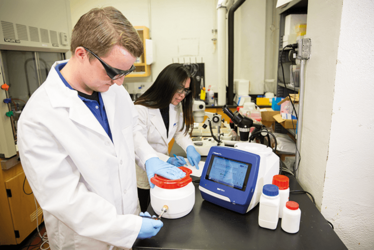
The i-Raman Pro ST uses a patent-pending probe that illuminates and collects Raman signal from a large area and depth of the sample. Many visually opaque packaging materials, such as pigment-filled plastic bottles, paper or fabric products can partially transmit laser and Raman light. The depth of sampling over the large sampling area offered by i-Raman Pro ST enhances the relative contribution of the content material in the collected spectrum over that of the packaging material. The intelligent software (patent pending) is able to separate the spectral features of the content material from that of the packaging, and compare with a large spectral library to achieve reliable identification of samples inside the container.
Potential impact
With its high-throughput design, the i-Raman Pro ST analyzer can non-destructively identify common chemicals through thick packaging material in seconds. The system design has the versatility to be adapted for conventional surface Raman measurements with a variety of sampling accessories from a microscope to zoom lenses for standoff measurements. Normal confocal Raman measurements can be made with an adaptor attached to the ST Raman probe, converting it to the confocal configuration. The ability of the i-Raman Pro ST to see through opaque layers expands Raman spectroscopy to more applications. It can be used for identification of materials non-invasively and for improved analysis of heterogeneous samples thanks to its larger sampling area. These capabilities plus its portability make the i-Raman Pro ST a useful tool for a variety of applications, from QC to research.
What the judges say:
“High sensitivity and great flexibility, allowing high performance non-destructive analysis. A big improvement in portable Raman.”
2. Micro Pillar Array Column: μPAC
For high-resolution chromatography of complex biological samples.
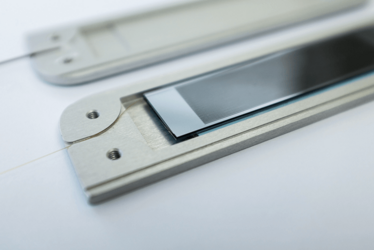
μPAC is the first micro-chip chromatography device that is manufactured using lithographic micromachining techniques. The layout of the stationary phase support structure is carefully designed, and the perfectly ordered backbone of the separation bed is formed by etching interstitial volumes out of a silicon wafer.
The low “on-column” dispersion, obtained thanks to the perfect order, virtually eliminates axial peak dispersion, resulting in higher column plate numbers with sharper peaks and higher concentration of compounds. The freestanding nature of the pillars also leads to much lower backpressure, allowing the use of very long columns. These properties result in chromatographic performance with high resolution and high sensitivity. This new approach, compatible with all commercial nano-LC equipment, improves LC analysis in complex mixtures of biological samples.
Potential impact
The past few years have seen the introduction of advanced bioanalytical technologies such as next generation sequencing (NGS) and LC-MS, which together provide more power for integrated and systematic investigation of cellular genomes, transcriptomes, and their proteomes and metabolomes. The holy grail of proteomics and metabolomics is the ability to decode the proteome and metabolome at the single-cell level, which imposes enormous challenges to sensitivity, as there are no amplification methods for proteins and metabolites comparable to those of nucleic acids. The µPAC column is a promising tool for limited sample proteomics. The combination of ultra-high resolution µPAC HPLC columns and high accuracy mass spectrometers allowed the identification of more than 3,000 proteins from the equivalent of 50 HeLa cells. Recently, the device has also been used to characterize monoclonal antibodies.
1. Hyperion Imaging System
An imaging solution for comprehensive analysis of cellular phenotypes and their interrelationships.
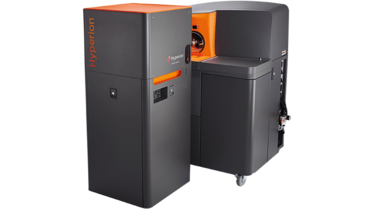
The Hyperion Imaging System brings together high-parameter CyTOF technology with imaging capability, enabling the simultaneous detection of 4–37 metal-tagged protein markers in the spatial context of the tissue microenvironment. Offering a new solution to current challenges in tissue imaging, Hyperion surpasses the capabilities of standard immunohistochemistry (IHC) and fluorescent imaging.
This new approach allows a comprehensive view of complex cellular phenotypes and their relationships in context – from a single scan. Researchers can profile precious FFPE or frozen tissues at subcellular resolution, and identify new biomarkers, visualize cellular social networks, or see how the immune system attacks tumors, identifying which immune subtypes are participating in activation or suppression of the immune system.
The system is accompanied by a pathologist-verified Maxpar imaging antibody portfolio, a software suite for image acquisition and data analysis, plus service and support.
Potential impact
Translating discoveries into better clinical outcomes takes dedication and a desire to use new approaches to ask the most difficult questions. Current solutions restrict our view and thus limit our understanding. Changing the course of how diseases are treated and ultimately cured requires a comprehensive understanding of cellular phenotypes and their relationships in the context of the tissue microenvironment.
The Hyperion Imaging System has the potential to revolutionize disease research by providing unprecedented visualization of complex cellular phenotypes and their relationships in the context of cancer, immuno-oncology, and a wide range of diseases.
What the judges say:
“Combines tissue imaging with cytometry, allowing correlation between biomarkers and cell interactions. This technology has the potential to be truly transformative.”

















